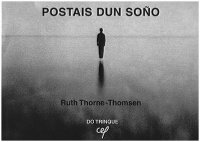
As propiedades da cámara estenopeica, como a profundidade de campo infinita ou a borrosidade determinada polo uso de papel como negativo, permitiranlle lograr imaxes extraordinariamente evocadoras, característica que define a totalidade da súa obra.
As súas series caracterízanse pola gran riqueza de referencias culturais abranguendo aspectos dos máis variados eidos, referencias entre as que non podía faltar algunha á propia historia da fotografía. Así en Expedicións réndelles unha homenaxe aos pioneros da fotógrafía topográfica do século XIX, ao tempo que os parodia subvertendo o seu uso da escala fotográfica. Desa forma permítenos viaxar a través da imaxinación a un mundo no que se misturan as referencias concretas á cultura mediterránea clásica, pola que sempre se sentiu moi atraída, con aspectos da cultura occidental contemporánea, como os avións ou os personaxes cinematográficos, e préstalle grande atención ao carácter simbólico dos elementos que inclúe nas súas imaxes coidadosamente construídas.
As referencias pictóricas son ineludíbeis, e dunha forma moi especial ao longo de toda a súa obra as que fai ao surrealismo así como á pintura romántica nas series Portas, Fases da lúa e Cancións do mar nas que a auga, o mar e a néboa logran crear unha atmosfera tan misteriosa como máxica. Elementos que no traballo Pazos, realizado en vigo en 1996, aparecen misturados con restos arquitectónicos que nos levan a unha viaxe imaxinaria ao pasado.
Manuel Sendón Xosé Luis Suárez Canal
In a time when technology is becoming more and more present in our society, making us dependent on it even in the most basic aspects of our lives, Ruth Thorne-Thomsen expresses herself through a stenopeic camera built by herself with a simple cardboard box. Since the end of the seventies, when she started working in the series Expeditions , she has never abandoned stenopeic photography although she also uses a conventional camera as a complement, or even digital technology, like in her latest work The Phases of the Moon, some of whose pictures are shown in this book. The qualities of a stenopeic camera, such as the infinite depth of field or the blurred aspect caused by the use of the paper as a negative, allow her to get extraordinarily evocative images, a characteristic which defines all her work.
Her series are characterised by the enormous richness of cultural references which cover aspects of the most varied fields, references which are sometimes related to the history of photograph. In Expeditions, for example, she plays a tribute to the pioneers of topographic photography of the 19th century and at the same time she parodies them by subverting their use of the photographic scale. In this way we are able to travel in our imagination to a world where the particular references to the classical Mediterranean culture (something which has always attracted her greatly), are mixed with aspects of the contemporary Western culture, such as planes or movie characters. She pays great attention to the symbolic character of the elements that are included in her carefully built images.
The pictorial references are unavoidable, specially those referring to the surrealism or to the romantic painting in the series Gates, The Phases of the Moon and Songs of the Sea, works where the water and the fog create an atmosphere both mysterious and magic. In her work Pazos (Vigo, 1996), these elements appear mixtured with architectural remains which take us to an imaginary travel into the past.
Manuel Sendón Xosé Luis Suárez Canal
____
Editorial: CEFIdioma: Gallego
